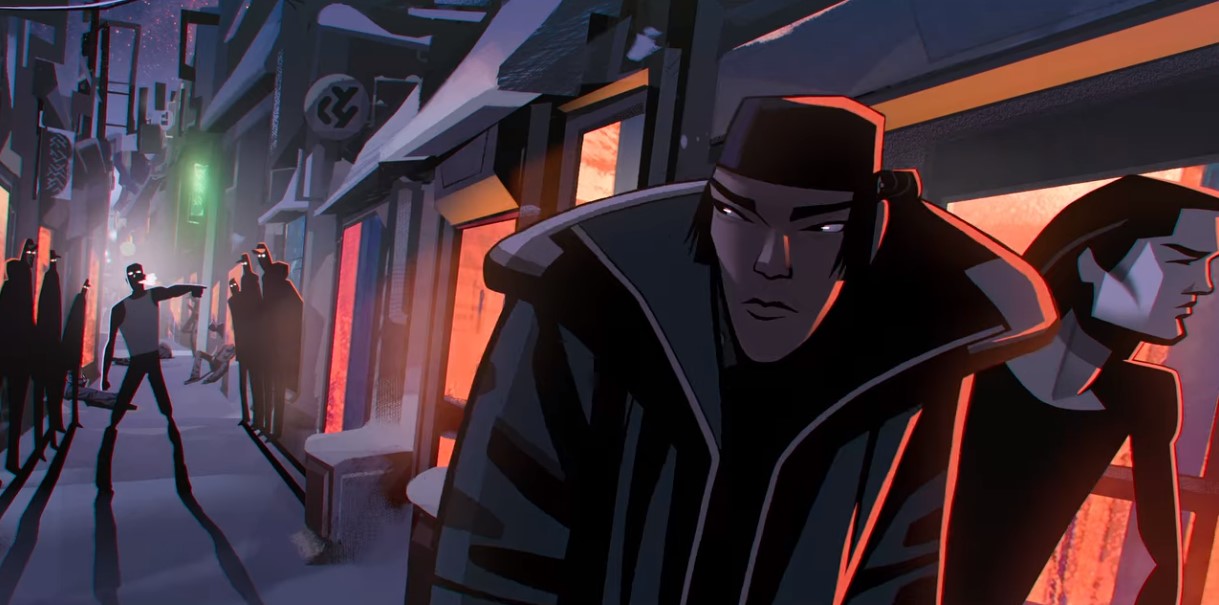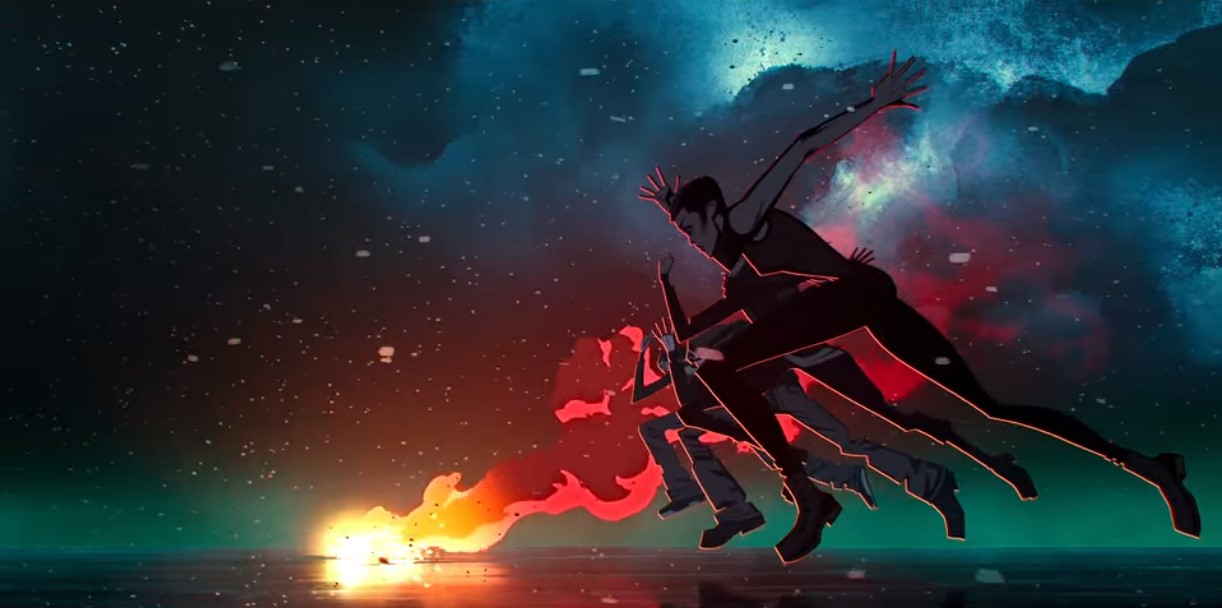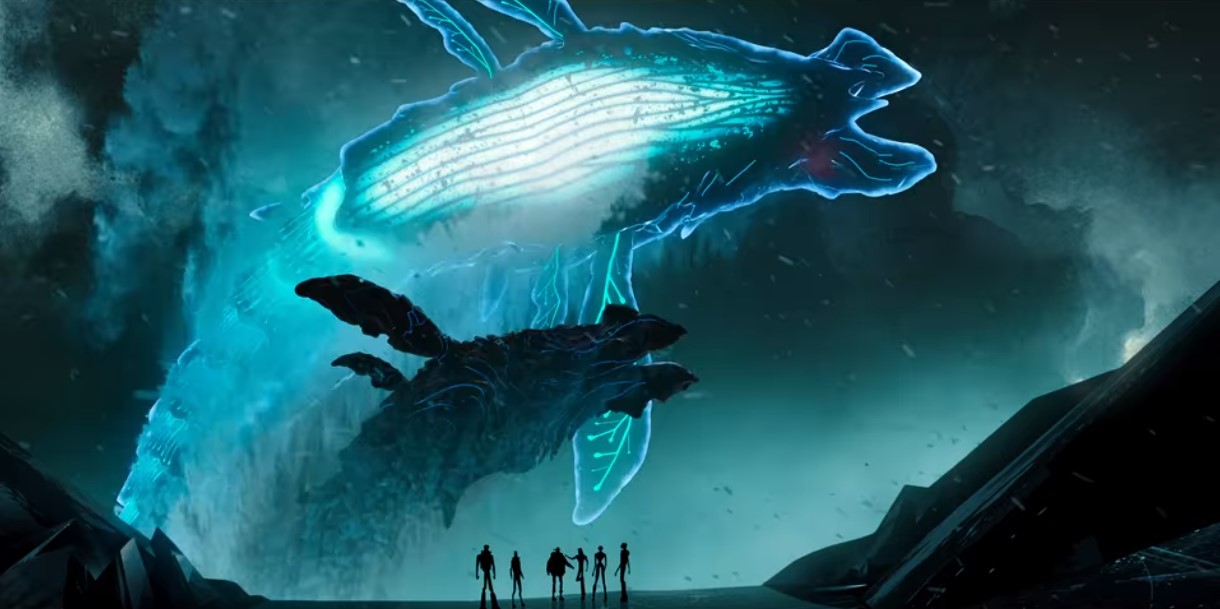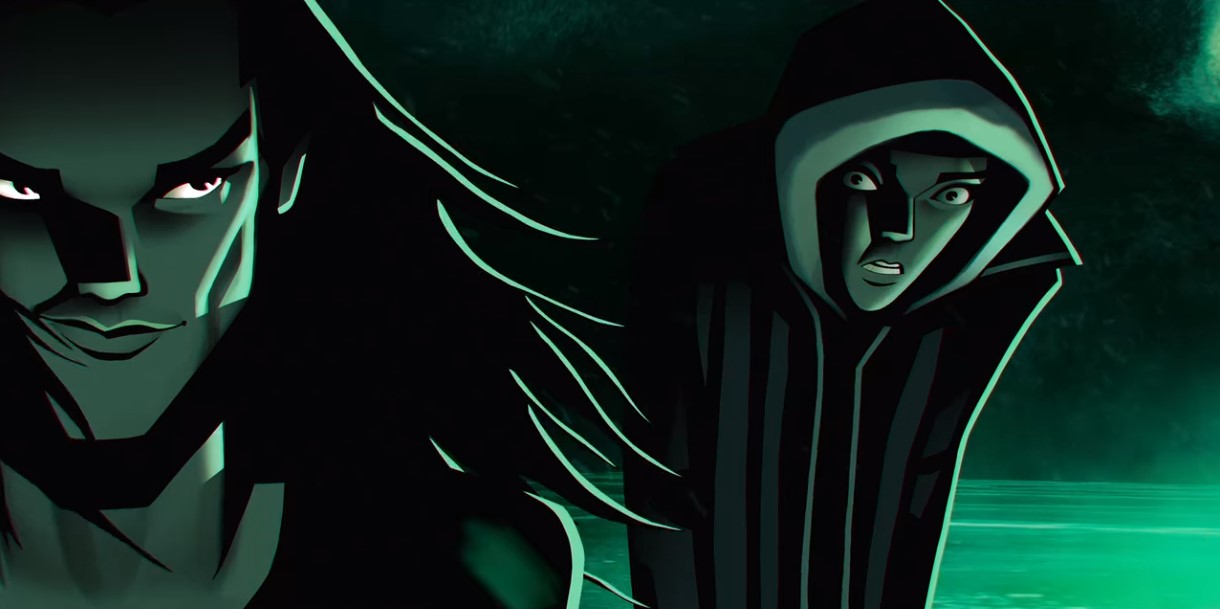Tim Miller’s NSFW animated anthology series ‘Love, Death and Robots’ has attained something of a cult status due to its stylistic portrayal of sci-fi worlds with diverse cultures, and the second episode of the second volume, called Ice,’ is no exception. Directed by Canadian visual artist Robert Valley from the titular short story by speculative fiction writer Rich Larson, the story revolves around two brothers as they come to master their abilities and gain respect in a hostile world.
Featuring an animation style that reminds one of a Gorillaz music video, the visceral and nugatory story is woven around a climactic race for survival, but the ending does not strike a staggering chord in the vein of some other tales of epic grandeur from the series. However, the narrative opens a floodgate of questions as it comes to a close. Now we know what brings you here. So, without further ado, let us revisit the story and attempt to dissect the ending. SPOILERS AHEAD.
Love, Death and Robots Season 2 Episode 2 Recap
Two brothers, Fletcher and Sedgewick, are newcomers to a far-off frostbit colony world. The Earth is a relic of a bygone era, and life in the colony is characterized by relentless hustle. The colony is also a post-racial world where everyone is modded, and those who are not — the so-called “extros” — are increasingly ostracized. But we get the idea that there are not many of them. We meet the protagonists, Fletcher, and his non-modded elder brother, Sedgewick, a misfit in a world of giants.
Fletcher’s family is new to the colony. Fletcher’s father works as a harvester. His parents ask him whether he has made friends in the locality, which he affirms while pointing out that all of the other children in the colony are modded, and they speak a weird language. However, on the other hand, his mother raises her concern about Sedgewick, who is having a hard time trying to adjust to the place. Sedgewick wants to go see the Frostwhales, but his brother says that it may be dangerous for him. However, after a brawl, Fletcher, against his wish, agrees to take Sedgewick along with him.

They go out into the city, which is a grim and dusky industrial dystopia with alleys filled with uncanny-looking drugged people with burning eyes. They lumber through the city to meet Fletcher’s associates, a group of four flashy teenagers with superhuman abilities – Oxo, Logan, Brume, and Pressima. After a stint at football, they go through a tunnel to a vast ice field. Logan briefs the team about the race.
Frostwhales apparently knock the ice at least seven times, and they have to stay safe from the creatures while racing. They puff hallucinogens from a pipe, and before Sedgewick can snap out of his drugged state of mind, the whales appear. He runs along with the mods, falling behind due to his lack of powers. But Fletcher injures his leg, and while the other mods bypass him, Sedgewick rises to the occasion to save him.
Love, Death and Robots Season 2 Episode 2 Ending: What is Modding?
In the numbing colony world of the story, modding is the dominant trend. Everyone except for Sedgewick is keen on modding, and non-Mods such as Sedgewick are tagged by the slang “extro.” Mod stands for modification, and also “modernists,” if we go by the youth subculture of the same name. Characters in the narrative are seen to possess some superpowers through bodily and internal modification, but that does not make them any less vulnerable to the inhospitable environment than non-modded individuals like Sedgewick.

Sedgewick is an ordinary human being who does not follow the subculture. However, modding, as it turns out, has something to do with fashion. If we look at certain historiographies, we shall find that the mod culture emerged in London (with their rivals being the Rockers), characterized by shaved or low-cut hair and sophisticated and hip clothing, as well as a certain penchant for everything “sexy and streamlined.”
If one looks closely, other characters are portrayed in sharp contrast to the baggy and seemingly freestyle clothing of Sedgewick. So, the story comes off as an exploration into the greater mythology of the mods. However, as the finality suggests, one does not need to be a mod to become a hero, and in the group of people with superpowers, it is Sedgewick, a normal person, who becomes the savior.
What Are the Machines Harvesting?
At the beginning of the story, Fletcher’s father discusses his work while dining with the family. He passingly talks about his job of harvesting. While he speaks, we see the image of gigantic machines amidst an enormous frosted surface, under which lives the mythical Frostwhales, we are told. This is the same place where the climactic race occurs.

Given the climactic predispositions of the colony, we doubt that this “harvesting” refers to any form of crop cultivation. We think it is some kind of energy that these machines are harvesting from the depth of the frozen water body. If we go back to the source material, the picture is made more apparent. Fletcher’s father is in the business of harvesting methane, which is an efficient, alternative source of energy in the modern world.
Why is it So Difficult to Understand the Language?
As Fletcher remarks, the language spoken by the local children of the colony is “weird.” When the audience meets the crew, they speak in broken English, which is polluted by some other language. They also have an unmistakable accent, while Fletcher’s parents do not speak in that mixed tongue. It seems that the language of the teenagers’ group is a form of a creole language.
Creole is understood in the discipline of linguistics as a stable and natural language stemming from a mix of two or more distinct languages. Youth subcultures have often been portrayed as speaking in creoles and mixed languages, like in Stanley Kubrick’s ‘A Clockwork Orange.’ In the post-racial age depicted in the narrative, people from all races and ethnicities have ended up in the colony, which has eroded much of the sanctity of the distinct languages, fusing them into a passable form of communication.
Read More: Shows Like Love, Death and Robots


You must be logged in to post a comment.